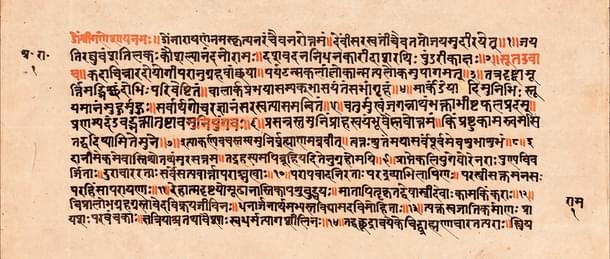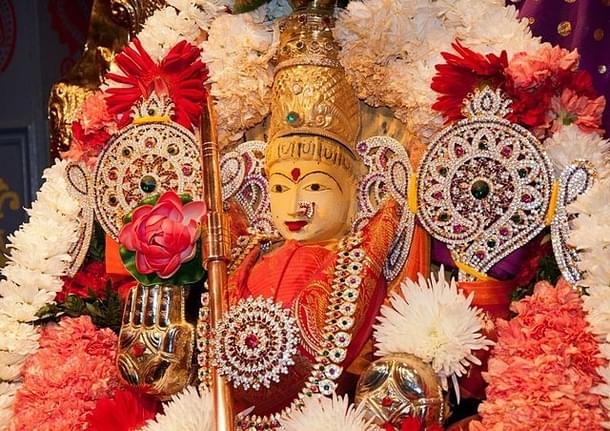Newsletters
This Tamil Epic's Interesting Link To Sri Lalitha Sahasranama
Arush Tandon
Sep 26, 2022, 08:12 PM | Updated 08:12 PM IST
Save & read from anywhere!
Bookmark stories for easy access on any device or the Swarajya app.
1. An Interesting Interrelation

I was originally meant to write a block of text here that was not related to the Sri Lalitha Sahasranama - we wanted to put something else here to give an alternative for those not fully interested in Aravindan's modern commentary of the Sahasranama.
But I discovered the below and I had to share it.
Silappadikaram - a Tamil epic, at-least 1500 years old, has very similar references to the Devi as the Sahasranama.
Scholars have said that the descriptions of the goddess in the epic are drawn from the Sahasranama, and they have shown many examples to prove this.
The Brahmanda Purana, in which the 1000 names of the goddess is found, was composed probably 100-200 years before the Silappadikaram - in 200 years, a Vedic purana had spread to the very corners of India!
There's more about Brahmana Purana.
It was the oldest Hindu text found as far away as Bali, Indonesia.
The purana contains detailed descriptions of Kanchipuram, Cuttack and Kashmir - indicating the spread of India's sacred geography some 1600 years back.
It also contains Adhyatma Ramayana, an Advaita Vedanta treatise of over 65 chapters and 4,500 verses.
Amar Govindarajan
2. She Who Immerses Countless Multiverses In Her Radiance

Nijaruna-prabhapura-majjad-brahmandamandala: She who immerses all the universes in Her red/rosy radiance. This is the twelfth name of the Goddess in the Sri Lalitha Sahasranama.
The import of this name can be said to rest in two themes: The value of the light of dawn in Hindu scriptures and philosophy and the idea of multiple universes.
Taking Light first: In the Hindu tradition, Light is taken to be a symbol of, and almost a synonym for, Truth, Knowledge, and ultimately, Brahman itself.
In this name however, it is specifically mentioned—her red (aruna) radiance. Why red?
Red is the colour of dawn.
In Hindu philosophy, dawn is not just an auspicious time of the day but is a symbol that portends the coming illumination of Truth.
The red light of dawn symbolises that Untruth and Darkness has been left behind, and the journey towards Truth and Light is going to begin.
And according to the Lalitha Sahasranama, the same red radiance emanates from the Devi, and ALL the universes are bathed in that light.
This name also reinforces in a way the sixth name of the Goddess in the Sahasranama: Udyadbhanu-sahasrabha—She who is as bright as thousands of rising Suns.
Multiple universes: The brahmanda is our universe, while brahmanda-mandala refers to a system containing many tens of millions (crores) of universes.
Once again, this aspect of the twelfth name relates to yet another name in the Sahasranama - Aneka-koti-brahmanda-janani (620), She who is the Mother of tens of millions of the universes or multiverses.
The core of the meaning: Read together, the names (12th and 620th) imply that not only does She give birth to countless universes but also that She immerses all the multiverses in Her true (nija) red (aruna) effulgence (prabha) of dawn.
Read Aravindan Neelakandan’s original article on the twelfth name here.
Arush Tandon
3. The Swarajya Heritage Program

What is it? For 3+ years we've been diligently investing in reporting and researching topics on Indic heritage and cultural themes.
Our objectives for this campaign are
First, raise awareness about the gross misgovernance in affairs relating to Indic heritage by culturally iliterate government bodies.
Second, promote heritage tourism through our reportage and special products.
Third, invest in meaningful in-depth reportage on heritage issues such as idol theft, protecting monuments and cultural practices.
Back us this festive season: You can contribute as little as Rs 2999/ towards the program - be a part of the Swarajya Heritage!





